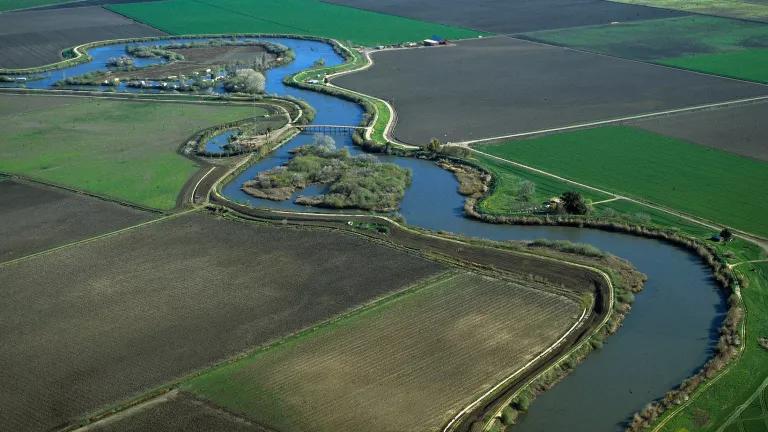| CVPIA Salmon Index Blog Series |
|
|
My colleague Ed Osann blogged recently about how new tiered water rates approved by the California Public Utilities Commission will allow water users to save money and make better use of our scarce water resources. The concept is simple: charge lower rates to those who use average amounts of water, and charge higher rates for higher than average levels of water use, with the highest rate reserved for levels of water use far in excess of the summertime average. As Ed explained: “This benefits customers who want to be smarter about their water use, and encourages heavy users to find ways to make their water consumption more efficient.” The resulting savings can also help us adapt to our changing water landscape in California.
Sounds sensible, right? And so necessary in light of the unmistakable signs that California is drawing down its river systems and groundwater supplies at an unsustainable rate. Makes you wonder why it hasn’t been implemented on a larger scale.
In fact, Congress hit upon the same idea 20 years ago, when it passed the Central Valley Project Improvement Act. The Act required the Bureau of Reclamation to implement tiered rates on water deliveries from the largest water project in the United States: the Central Valley Project (CVP). In conjunction with other sensible measures, like improving the efficiency of CVP water use and conforming over-allocated CVP contract amounts to environmental limits, the Act gave the Bureau the tools and the authority to modernize century-old reclamation practices that were designed to encourage pioneers to settle the wild west, and bring CVP operations in line with 21st century realities and priorities.
But the Bureau has largely ignored or ineffectively implemented these requirements in the wake of the CVPIA. That means that the vast majority of the 270 CVP contracts administered by the Bureau for delivery of 9.5 million acre-feet of water annually continue to overpromise the delivery of cheap water at prices that encourage wasteful use. 9.5 million acre-feet is a huge block of water – more than fourteen times the amount of water used by the entire City of Los Angeles in a year. Yet, the City of LA pays close to $1,000/acre-foot to buy water imported from the San Francisco Bay-Delta from the Metropolitan Water District of Southern California, while most CVP contractors pay less than $100/acre-foot for water from the Delta, and some even complain about having to pay $9/acre-foot.
The Bureau’s failure to effectively wield the pricing, efficiency and contract reform tools of the CVPIA has been a major factor in bringing California to the place where we are today: where environmental limits in our river systems have been exceeded; salmon and other fisheries sustained by the Delta have crashed; and courts have had to step in to impose last-ditch limits on excessive water pumping. And still, CVP contractors demand the delivery of more subsidized water. Wouldn’t everyone in this system be better off if CVP contracts reflected realistic water delivery levels – allowing farmers to rely on their contracted water supply and plan ahead – and water prices increased as the amount of water used increases? Farmers could still choose to plant water-intensive crops if it made economic sense, but they would pay more for that water use than others who elected to grow more efficiently.
The journalist Cynthia Barnett recently wrote a compelling story about the Bureau’s failure to face the changing realities of water in the west at Hoover Dam, even as Lake Mead dries up. She noted that the Bureau’s tour of the Dam presented “the illusion of water abundance at its most obscene.” Sadly, the same observation applies to the Bureau’s failure to implement the water saving and pricing tools of the CVPIA. Effective use of these tools can help us rationally adapt to the real and growing water limits that we face, instead of lurching from crisis to crisis. It’s time for the Bureau to dust off their authority and get to work.



